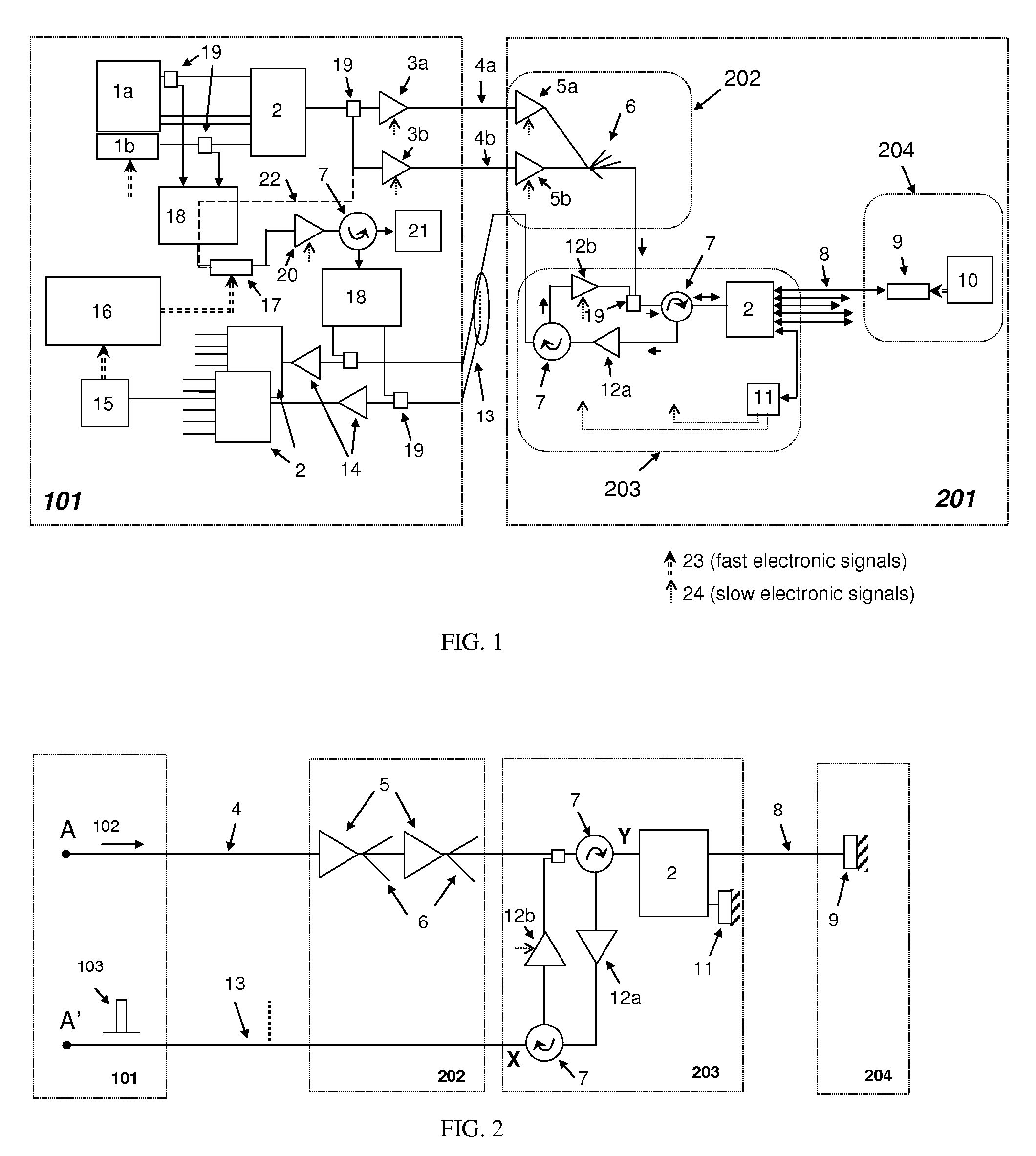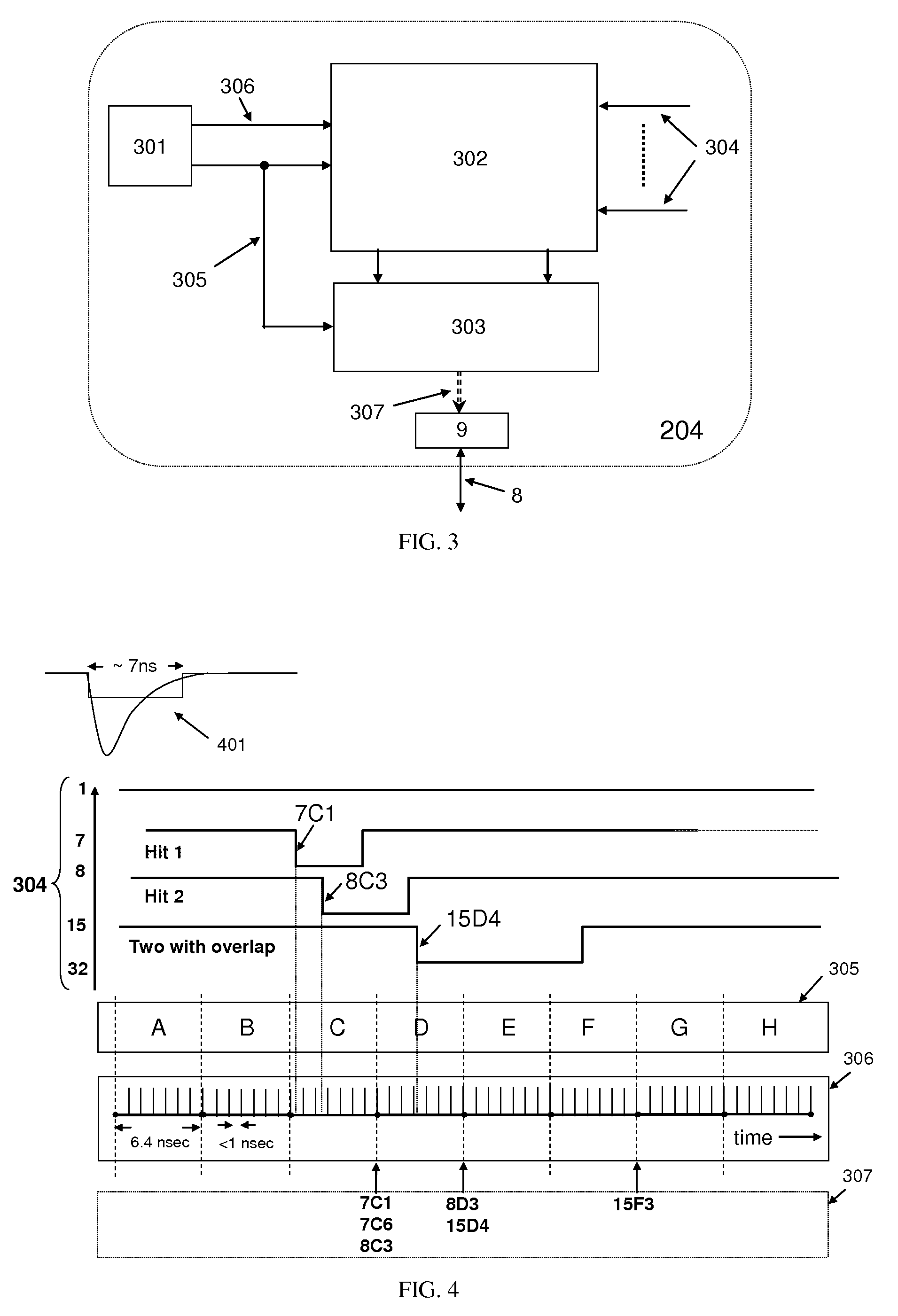Optical fibre network
a fiber optic network and optical fiber technology, applied in the field of optical fiber networks, can solve the problems of large amount of remote electronics which must be powered, the clock distribution system calibration, etc., and achieve the effect of reducing the maximum bit ra
- Summary
- Abstract
- Description
- Claims
- Application Information
AI Technical Summary
Benefits of technology
Problems solved by technology
Method used
Image
Examples
Embodiment Construction
[0037]The invention is based on a type of telecoms WDM-PON (wavelength division multiplexed passive optical network) employing a combination of space, wavelength and time-division multiplexing. The invention overcomes the problems of the prior art by using a novel reflective network architecture which includes a method for calibrating time delays.
[0038]Referring to FIG. 1, light from a centralised array (1a and 1b) of ‘W’ (˜100) individual wavelength optical sources is combined by a multiplexer 2 into a dense WDM (DWDM) signal and amplified by an optical amplifier 3a for transmission over a fiber 4a (and possibly copied by an optical splitter 19 to a second amplifier 3b and fiber 4b for protection) to a remote sensor array 201. At the remote sensor array 201, the signal is amplified by optical amplifiers 5a or 5b and copied by an optical splitter network 6 to ‘S’ (˜100) dense wavelength division multiplexers (DWDMs) 2 via an optical splitter 19 and an optical circulator 7. The DWDM ...
PUM
 Login to View More
Login to View More Abstract
Description
Claims
Application Information
 Login to View More
Login to View More - R&D
- Intellectual Property
- Life Sciences
- Materials
- Tech Scout
- Unparalleled Data Quality
- Higher Quality Content
- 60% Fewer Hallucinations
Browse by: Latest US Patents, China's latest patents, Technical Efficacy Thesaurus, Application Domain, Technology Topic, Popular Technical Reports.
© 2025 PatSnap. All rights reserved.Legal|Privacy policy|Modern Slavery Act Transparency Statement|Sitemap|About US| Contact US: help@patsnap.com



